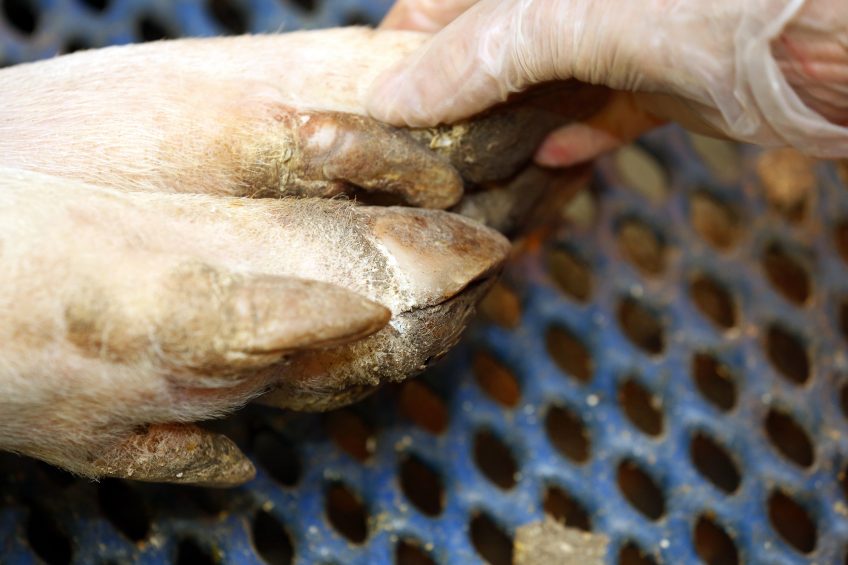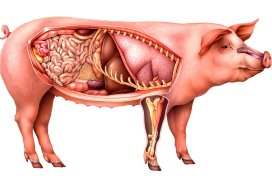What is the long-term effect of zinc on sow claws?

Dietary zinc supplementation minimally influences claw quality, unlike other variables like floor type and phase within the reproductive cycle.
That is what a large group of predominantly Belgian researchers concluded in a trial at Ghent University and the Flemish Institute for Agricultural and Fisheries Research (ILVO). Their findings have been published in the Journal of Swine Health and Production, a publication by the American Association of Swine Veterinarians.
Long-term impact of zinc
The scientists performed the study to evaluate the long-term impact of zinc (Zn) supplementation on claw lesions, claw conformation, and histological and mechanical claw characteristics of sows housed in groups on rubber top layer or concrete floors during gestation. They used 3 reproductive cycles to evaluate the effect of dietary zinc supplementation.

Do you want to know more about pig health issues? Check our Health Tool
In their article, they hypothesised at the start that both dietary zinc concentration as well as floor type would influence claw quality in sows. Claw quality, they wrote “is evaluated by visual scoring for claw shape, shape dimensions, lesion scoring, and measurement of structural, physical, and biochemical properties of the claw horn.”
Materials and methods during zinc study
In total 6 groups of about 21 sows were allotted to group housing on different floor types for 80 days during gestation. Within each group, sows were randomly allocated to 1 of 3 diets supplementing a basal diet with 0, 50, or 100 mg zinc per kg.
Claw lesion scoring, claw conformation, and horn growth and wear measurements were performed at days 50 and 140 of every cycle. Histological and mechanical characteristics were evaluated on claw samples of 36 sows after slaughter.
Results of study on zinc supplementation
Dietary zinc supplementation affected heel horn erosion score: sows supplemented with 100 mg zinc per kg diet had better scores. Distances between dermal papillae of the sagittal heel horn were larger, the researchers wrote in their study in the journal.
The scientists found that heel height was lower for sows supplemented with 0 and 100 mg zinc per kg than for 50 mg per kg. Horn growth and wear were lower for sows housed on rubber at day 50, but not at day 140. Dermal papillae distance was shorter for sows on rubber, the researchers said.
The researchers concluded that “no interaction effects between dietary Zn supplementation and floor type were found for claw quality measurements. Dietary Zn supplementation to a typical basal diet had only minor influences on claw quality in sows.” Floor type, as well as phase within the reproductive cycle, however, did have an effect.
The research paper was written by Miriam M J. van Riet, Frank A.M. Tuyttens, Sam Millet and Emilie-Julie Bos, Institute for Agricultural and Fisheries Research (ILVO), Melle, Belgium and Ghent University, Merelbeke, Belgium; Bart Ampe, ILVO, Melle, Belgium; Paul Bikker, Wageningen University & Research Centre (WUR), Wageningen, the Netherlands; Donna Vanhauteghem, Filip Van Bockstaele, Wim Van Den Broeck, Pieter Cornillie, Gijs Du Laing, Dominiek Maes and Geert P.J. Janssens, Ghent University, Belgium.











